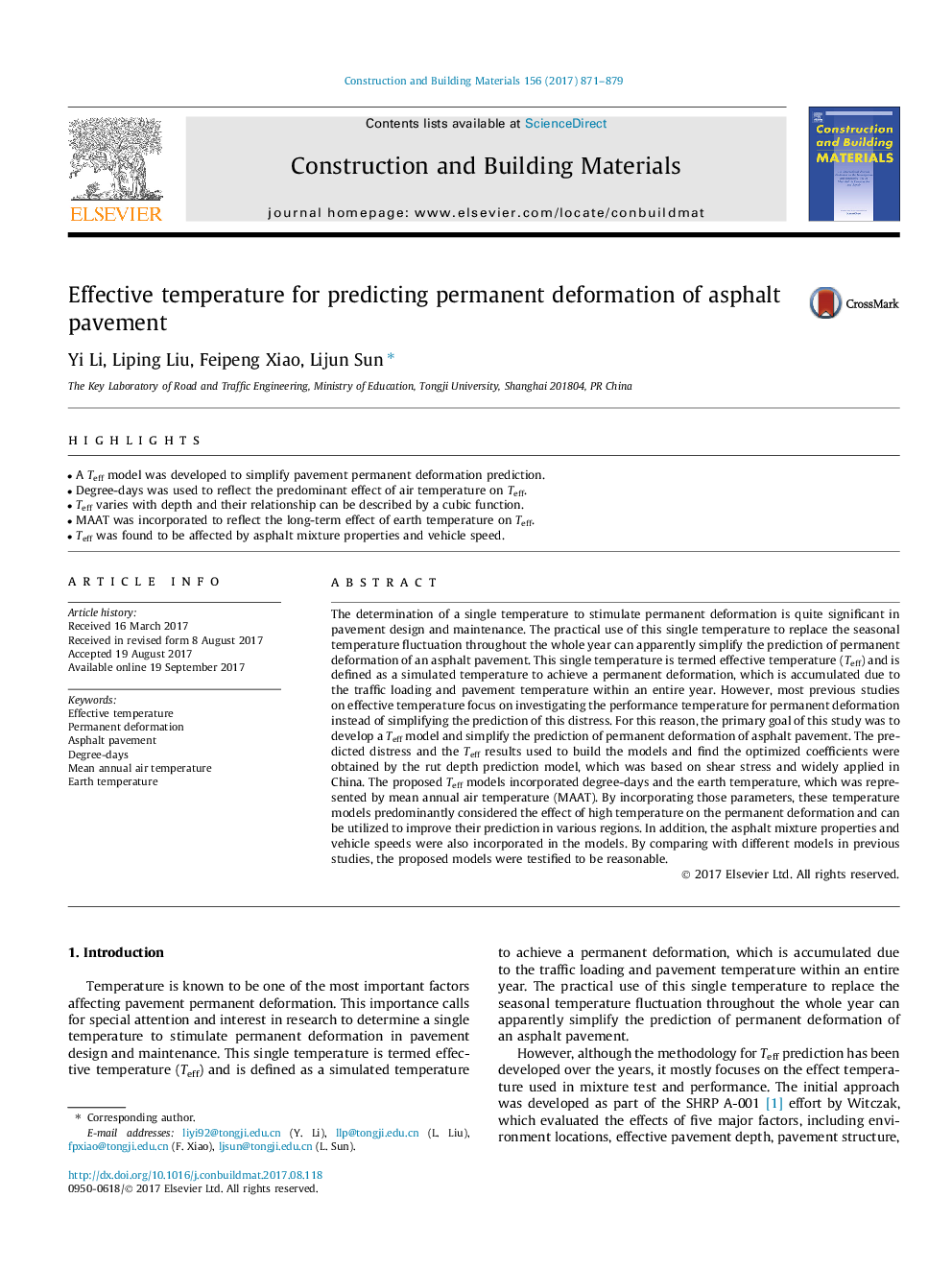| Article ID | Journal | Published Year | Pages | File Type |
|---|---|---|---|---|
| 4912715 | Construction and Building Materials | 2017 | 9 Pages |
â¢A Teff model was developed to simplify pavement permanent deformation prediction.â¢Degree-days was used to reflect the predominant effect of air temperature on Teff.â¢Teff varies with depth and their relationship can be described by a cubic function.â¢MAAT was incorporated to reflect the long-term effect of earth temperature on Teff.â¢Teff was found to be affected by asphalt mixture properties and vehicle speed.
The determination of a single temperature to stimulate permanent deformation is quite significant in pavement design and maintenance. The practical use of this single temperature to replace the seasonal temperature fluctuation throughout the whole year can apparently simplify the prediction of permanent deformation of an asphalt pavement. This single temperature is termed effective temperature (Teff) and is defined as a simulated temperature to achieve a permanent deformation, which is accumulated due to the traffic loading and pavement temperature within an entire year. However, most previous studies on effective temperature focus on investigating the performance temperature for permanent deformation instead of simplifying the prediction of this distress. For this reason, the primary goal of this study was to develop a Teff model and simplify the prediction of permanent deformation of asphalt pavement. The predicted distress and the Teff results used to build the models and find the optimized coefficients were obtained by the rut depth prediction model, which was based on shear stress and widely applied in China. The proposed Teff models incorporated degree-days and the earth temperature, which was represented by mean annual air temperature (MAAT). By incorporating those parameters, these temperature models predominantly considered the effect of high temperature on the permanent deformation and can be utilized to improve their prediction in various regions. In addition, the asphalt mixture properties and vehicle speeds were also incorporated in the models. By comparing with different models in previous studies, the proposed models were testified to be reasonable.
